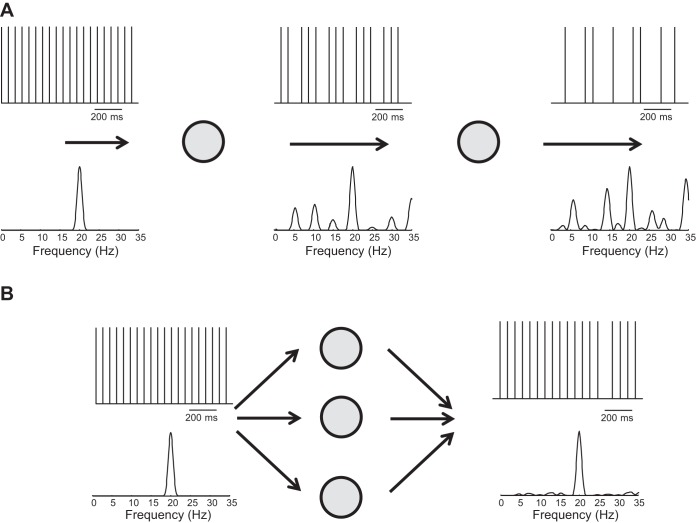Fig. 3.
Transformation of synaptic input received by a motor neuron into an output signal. A: train of delta functions modulated at a frequency of 20 Hz is convolved by an excitatory postsynaptic potential (EPSP) to simulate the input to a motor neuron (the convolution by the EPSP is not shown). The motor neuron (grey circle) is simulated as a perfect integrate-and-fire neuron. The output of the motor neuron contains the spectral component of the input at 20 Hz as well as additional harmonics that were not present in the input signal. Serial transmission of the output signal from the 1st neuron to a 2nd neuron will distort the original input signal (20 Hz) even more. B: distribution of the same (common) input to multiple neurons will preserve the original information in the average output signal of the involved neurons. In the absence of noise, in this example, 3 neurons are sufficient for an accurate transmission of a 20-Hz oscillation in the input signal into the average output signal.

